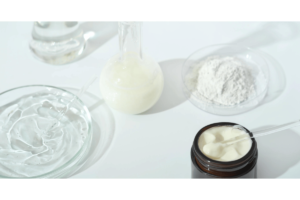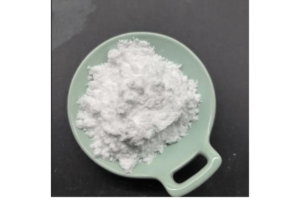In the context of carboxymethyl cellulose (CMC), the degree of substitution (DS) is defined as the average number of hydroxyl groups on the anhydroglucose unit of the cellulose backbone that have been substituted with carboxymethyl groups. This value can range from 0 (no substitution) to 3 (complete substitution of all available hydroxyl groups). The DS is a crucial parameter that significantly influences the physicochemical properties of CMC.
Impact of Degree of Substitution
- Solubility: The DS plays a pivotal role in determining the aqueous solubility of CMC. A higher DS typically correlates with increased solubility due to the introduction of more hydrophilic carboxymethyl groups, which enhance water affinity. This is particularly important in applications where complete dissolution of CMC is required, such as in food additives and pharmaceutical excipients.
- Viscosity: The viscosity of CMC solutions is heavily influenced by the DS. Higher degrees of substitution generally result in higher viscosity, attributed to the increased number of hydrophilic groups that expand and hydrate in water, thereby increasing the solution’s viscosity. This property is critical in applications requiring thickening agents, like in personal care products and industrial thickeners.
- Ionic Interaction and Stability: CMC with a higher DS exhibits greater ionic interaction due to the increased density of carboxylate groups, which can interact with cations in solution. This enhances the stability of CMC in various pH environments, especially under acidic conditions, where higher DS provides better resistance to hydrolysis and maintains functionality. This is advantageous in food processing and pharmaceuticals.
- Rheological Behavior: The rheological properties of CMC, including its shear-thinning behavior and viscoelasticity, are affected by the DS. Higher DS values enhance these properties, making CMC more effective in controlling the texture and flow of products in applications ranging from food thickeners to drilling fluids in the oil industry.
- Film-Forming Ability: In industries such as paper and textiles, the film-forming ability of CMC is enhanced by higher DS. Increased substitution levels improve the adhesive and binding properties, leading to better-quality films and coatings. This is essential for applications requiring strong, flexible films.
- Functional Performance in Formulations: The functional performance of CMC in formulations is directly tied to its DS. For instance, in pharmaceuticals, a higher DS can improve the bioavailability and controlled release characteristics of active ingredients. In detergents, it enhances soil suspension and anti-redeposition properties.
In summary, the degree of substitution is a fundamental parameter that defines the chemical and functional characteristics of carboxymethyl cellulose. By manipulating the DS, chemists can tailor CMC to meet specific application requirements, optimizing its performance across diverse industries.





